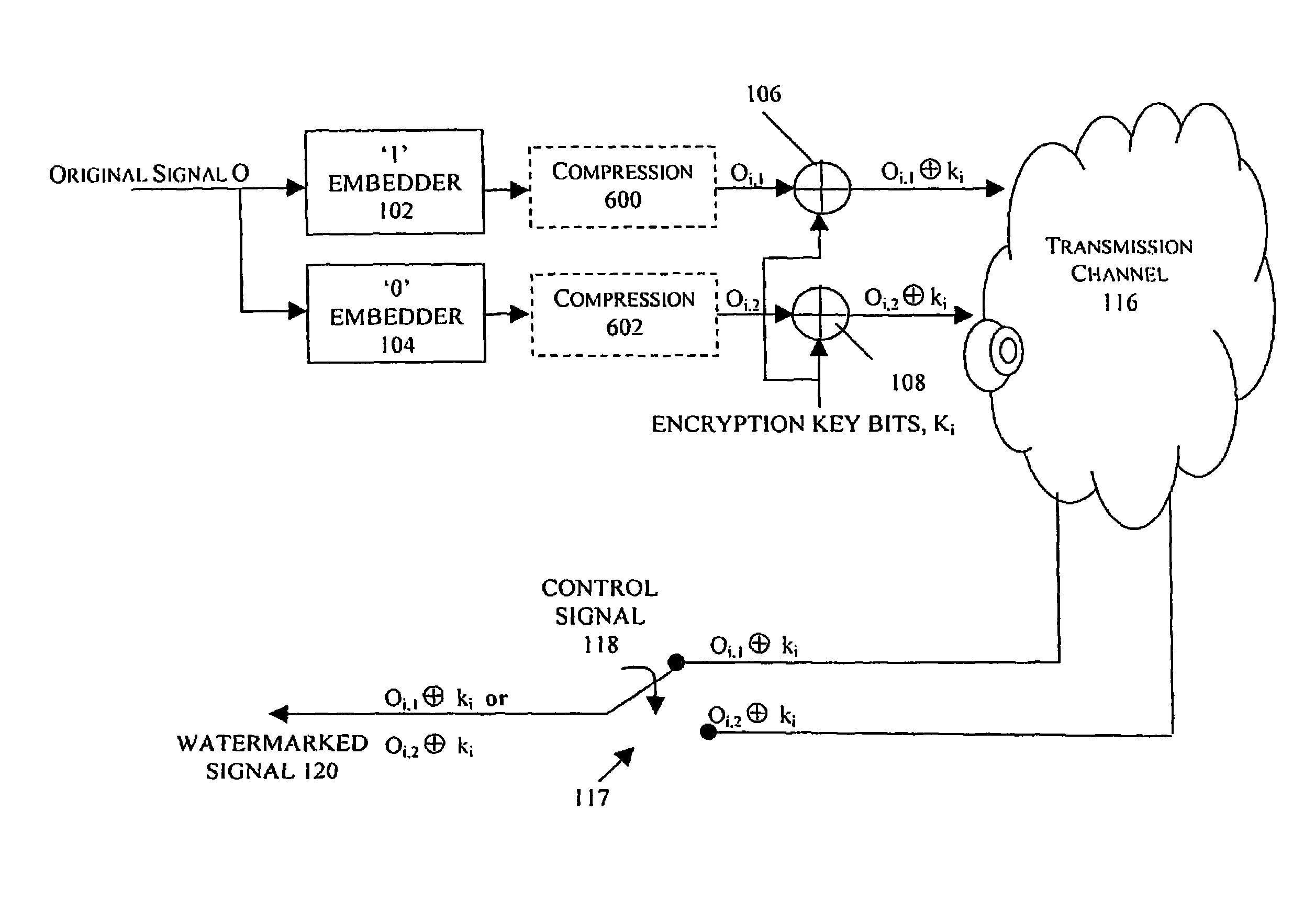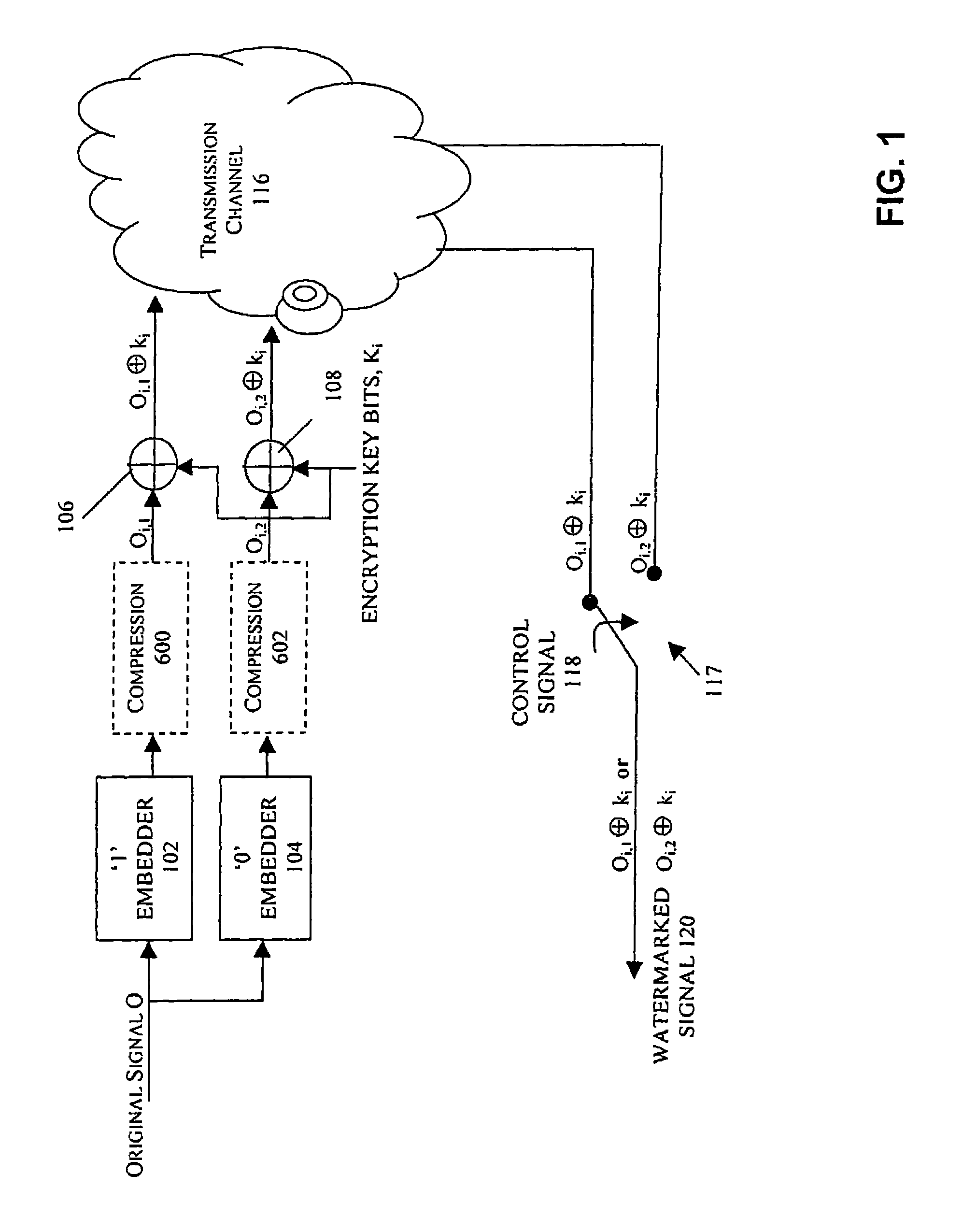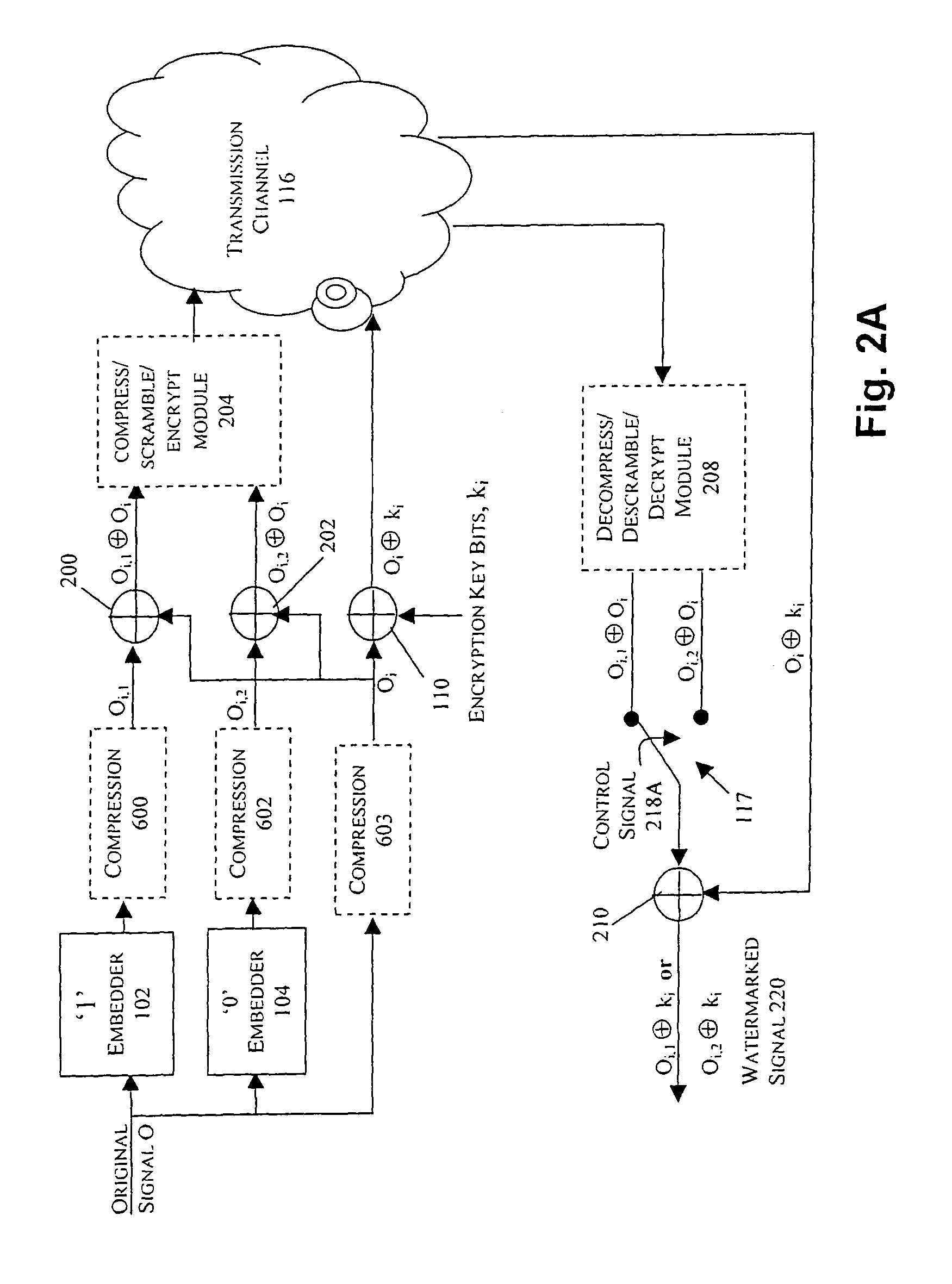Watermarking in an encrypted domain
a domain and encryption technology, applied in the field of watermarking in encrypted domains, can solve the problems of affecting the operation cost and overall security of the distribution system, introducing significant delays in the processing of content, etc., and achieve the effect of facilitating the combining of segments
- Summary
- Abstract
- Description
- Claims
- Application Information
AI Technical Summary
Benefits of technology
Problems solved by technology
Method used
Image
Examples
case 0
[0046] This is the default case, where the original content signal, and / or a set of signals containing embedded logical values, is encrypted and transmitted to the target destination in accordance with an example embodiment of the invention. The received signals are then decrypted and appropriately cut-and-spliced, in accordance with any one of the above-described prior art transactional watermarking techniques, to produce a content signal with a desired watermark value. The embedded content may then be optionally re-encrypted and transmitted to the next destination. The re-encryption is typically not necessary if the content watermarking and subsequent transmission are conducted all within a secure environment. This technique is equally applicable to all types of encryption algorithms and different variations of forensic / transactional watermarking since the watermark is applied to the plaintext signal.
case 1
[0047] In this example, illustrated in FIG. 1, two full-scale versions of the original content O signal are generated at the pre-processing stage, by embedding a first logical value in a first version of the original content signal O at embedder 102 and embedding a second logical value in a second version of the original content O at embedder 104. The term “full-scale” refers to a signal that is substantially similar to the original content signal as described in the pending U.S. patent application Ser. No. 11 / 124,465. In FIG. 1, embedder 102 is shown as embedding a logical “1” in the first version of the original content signal O and embedder 104 is shown as embedding a logical “0” in the second version of the original content signal O. However, those skilled in the art will appreciate that embedders 102, 104 may both be capable of embedding either logical 1s or 0s in the original content signal O.
[0048]Each full-scale version Oi,1, Oi,2 is then encrypted and transmitted to the cli...
case 2a
[0052] In the example embodiment shown in FIG. 2A, three signals are transmitted to the client side. One full-scale signal is a version of the original host content signal O. This version of the original host content signal Oi is encrypted on a bit-by-bit basis at XOR operator 110 to produce encrypted stream Oi⊕ki. The other two signals are produced by first embedding two logical values in separate versions of the original content signal O (at embedders 102 and 104) to produce two embedded signals Oi,1 and Oi,2 as discussed above in connection with FIG. 1. These signals Oi,1 and Oi,2 are next XORed with the original signal Oi at XOR operators 200, 202, respectively to produce signals Oi,1⊕Oi and Oi,2⊕Oi. Signals Oi,1⊕Oi and Oi,2⊕Oi are optionally compressed, scrambled or encrypted (e.g., at compress / scramble / encrypt module 204) prior to their transmission over transmission channel 116 to the client side (e.g., a user location or user device).
[0053]These optional operations at modul...
PUM
 Login to View More
Login to View More Abstract
Description
Claims
Application Information
 Login to View More
Login to View More - R&D
- Intellectual Property
- Life Sciences
- Materials
- Tech Scout
- Unparalleled Data Quality
- Higher Quality Content
- 60% Fewer Hallucinations
Browse by: Latest US Patents, China's latest patents, Technical Efficacy Thesaurus, Application Domain, Technology Topic, Popular Technical Reports.
© 2025 PatSnap. All rights reserved.Legal|Privacy policy|Modern Slavery Act Transparency Statement|Sitemap|About US| Contact US: help@patsnap.com



